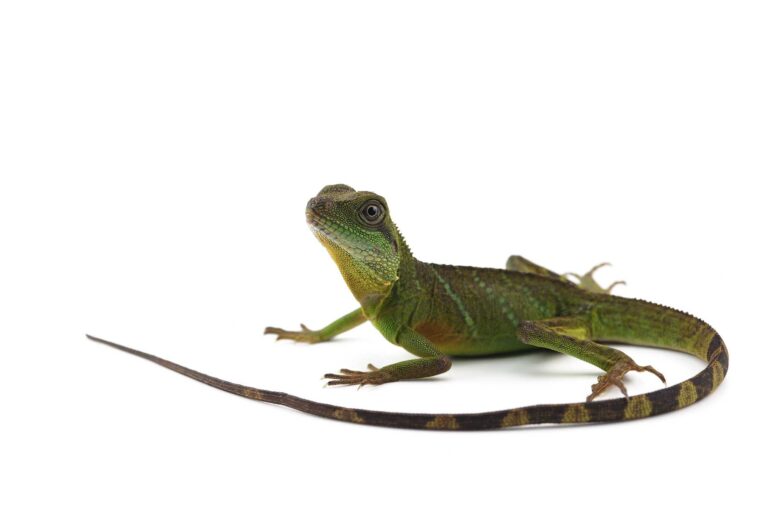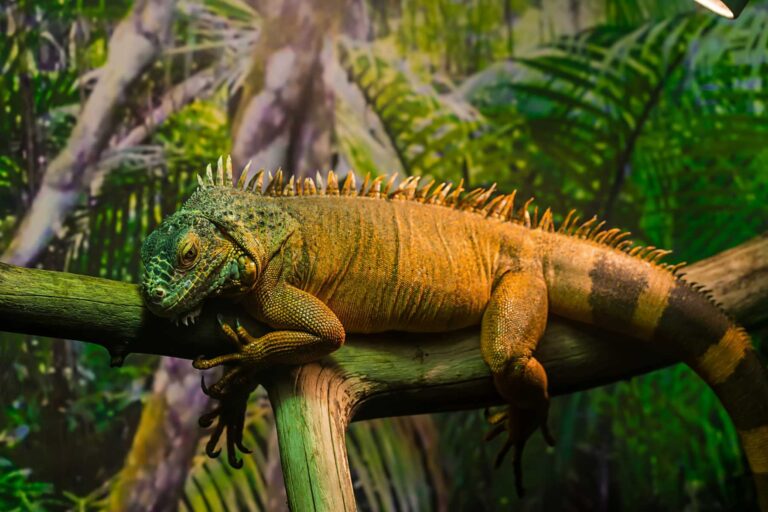Exploring the Predators of Lizards: A Comprehensive Overview
Lizards, those scaly, quick-footed creatures, play a vital role in ecosystems worldwide. From deserts to rainforests, they contribute to biodiversity and ecological balance. But in the circle of life, they aren’t just sunbathing and chasing insects; they also find themselves on the menu for various predators.
This comprehensive exploration delves into the intricate web of creatures that consider lizards a delectable meal. From the majestic raptors soaring overhead to the stealthy snakes slithering through the underbrush and even to the seemingly harmless amphibians lurking in the shadows, lizards face an array of threats from the animal kingdom.
Let’s embark on a journey to uncover the predators of lizards, their hunting techniques, and the fascinating dynamics of predator-prey relationships in the wild.
Predatory Birds
Raptors, with their keen eyesight and razor-sharp talons, are formidable predators of lizards. Species like hawks, eagles, and falcons reign supreme in the skies, scanning the ground below for unsuspecting prey. With lightning-fast reflexes, they swoop to snatch up lizards basking in the sun or scurrying across open terrain.
Some birds of prey, such as the Red-tailed Hawk and the American Kestrel, specialize in hunting small reptiles like lizards. Their hooked beaks and powerful feet equipped with curved talons make capturing and dispatching their scaly quarry easy.
| Bird Species | Prey Lizards |
| Red-tailed Hawk | Western Fence Lizard, Desert Spiny Lizard, etc. |
| American Kestrel | Green Anole, Brown Anole, Mediterranean Gecko, etc. |
| Peregrine Falcon | Collared Lizard, Whiptail Lizard, Fence Lizard, etc. |
Snakes
Nationally renowned for their stealth and patience, snakes are formidable predators of lizards. Whether gliding silently through the grass or coiled in ambush among rocks, they strike with deadly precision when the opportunity arises. Species like the Kingsnake and the Coachwhip specialize in hunting lizards, using a combination of venom and constriction to subdue their prey.
| Snake Species | Prey Lizards |
| Kingsnake | Western Fence Lizard, Common Side-blotched Lizard, etc. |
| Coachwhip | Eastern Collared Lizard, Six-lined Racerunner, etc. |
| Garter Snake | Alligator Lizard, Sagebrush Lizard, Spiny Lizard, etc. |
Mammalian Predators
Carnivorous mammals are also prominent among the predators of lizards. From sleek felines to cunning canids, these creatures employ various hunting techniques to capture their scaly prey. Species like the Domestic Cat and the Red Fox are known to stalk lizards in urban and rural environments, using stealth and agility to outmaneuver their quarry.
| Mammal Species | Prey Lizards |
| Domestic Cat | House Gecko, Common Wall Lizard, Mediterranean Gecko, etc. |
| Red Fox | Northern Alligator Lizard, Spiny Lizard, Skink, etc. |
| Coyote | Western Fence Lizard, Side-blotched Lizard, Whiptail Lizard, etc. |
Other Reptiles
It’s common for one scaly creature to feast on another in reptiles. Larger reptiles like crocodiles and alligators consider lizards a tasty snack, especially when small and vulnerable. With powerful jaws and lightning-fast reflexes, these apex predators make short work of their scaly prey.
| Reptile Species | Prey Lizards |
| American Alligator | Green Anole, Brown Anole, Mediterranean Gecko, etc. |
| Nile Crocodile | Leopard Gecko, House Gecko, Spotted Gecko, etc. |
| Komodo Dragon | Monitor Lizard, Tokay Gecko, Tree Gecko, etc. |
Amphibians
Amphibians, often associated with damp habitats and croaking choruses, also include voracious predators of lizards. Frogs and toads, with their sticky tongues and insatiable appetites, eagerly consume any lizard unlucky enough to cross their path. Species like the Bullfrog and the American Toad are known for their opportunistic feeding behavior, snatching up lizards with lightning-fast strikes.
| Amphibian Species | Prey Lizards |
| Bullfrog | Green Anole, Fence Lizard, Mediterranean Gecko, etc. |
| American Toad | Side-blotched Lizard, Whiptail Lizard, Skink, etc. |
| Tree Frog | Anolis Lizard, Gecko, Skink, etc. |
Invertebrates
Even invertebrates, those spineless wonders of the animal kingdom, get in on the act when it comes to feasting on lizards. With their venomous bites and silk-spun traps, arachnids like spiders and scorpions make short work of unsuspecting lizards that wander too close. Insects like mantises and beetles also play a role in preying on lizards, using their formidable mandibles to crush and consume their scaly prey.
| Invertebrate Species | Prey Lizards |
| Tarantula Spider | Western Fence Lizard, Desert Spiny Lizard, etc. |
| Scorpion | Side-blotched Lizard, Skink, Gecko, etc. |
| Praying Mantis | Anolis Lizard, Mediterranean Gecko, Skink, etc. |
Fish Predation
In aquatic ecosystems, fish are not exempt from the allure of lizards. Species like the Pike and the Bass lurk in the murky depths, waiting for unwary lizards to venture too close to the water’s edge. They snatch up their scaly prey with lightning-fast strikes, leaving little chance for escape.
| Fish Species | Prey Lizards |
| Northern Pike | Eastern Fence Lizard, Skink, Anole, etc. |
| Largemouth Bass | Green Anole, Brown Anole, Mediterranean Gecko, etc. |
| Catfish | Fence Lizard, Skink, Tree Lizard, etc. |
Cannibalism
In the world of lizards, it’s not just external predators that pose a threat. Cannibalism, the act of one lizard consuming another of its kind, is not uncommon in certain species. Whether driven by resource competition or sheer opportunism, lizards will not hesitate to turn on their kind when hunger strikes.
| Lizard Species | Cannibalistic Behavior |
| Green Anole | Juveniles consume smaller conspecifics. |
| Spiny Lizard | Larger individuals preying on smaller ones. |
| Collared Lizard | Intraspecific predation during territorial disputes |
Human Predation
Humans, too, have historically played a role in the predation of lizards. In many cultures, lizards are considered a delicacy, prized for their flavor and nutritional value. Whether roasted over an open flame or incorporated into traditional dishes, lizards have found their way onto the plates of countless individuals throughout history.
In certain regions, human activities such as habitat destruction and hunting have contributed to declines in lizard populations. As urbanization spreads and natural habitats shrink, lizards become increasingly vulnerable to predation by humans and their domestic animals.
Environmental Factors
Environmental factors also play a significant role in shaping predator-prey relationships in the wild. Habitat loss, climate change, and pollution can all influence the distribution and abundance of lizards and their predators. As ecosystems undergo rapid changes, the delicate balance between predator and prey hangs in the balance.
Conclusion
In the intricate tapestry of nature, lizards occupy a unique niche as both predator and prey. From the soaring heights of the sky to the water’s murky depths, they face myriad threats from the animal kingdom. But despite their challenges, lizards continue to thrive in ecosystems worldwide, and their survival is a testament to their resilience and adaptability.
As we strive to understand the complex dynamics of predator-prey relationships, let us not forget the humble lizard and its place in the circle of life. Through careful observation and conservation efforts, we can ensure that these fascinating creatures continue to grace our planet for generations.



